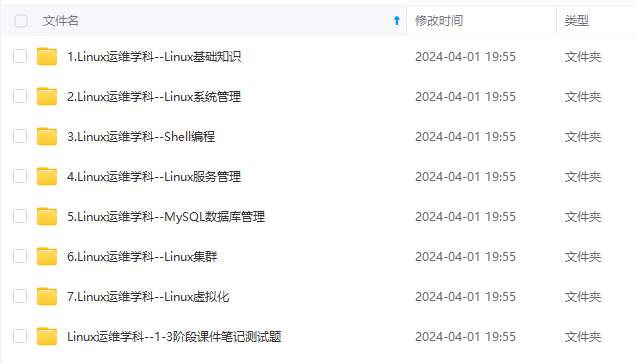k8s简单搭建
k8s搭建过程
前言
最近学习k8s,跟着网上各种教程搭建了简单的版本,一个master节点,两个node节点,这里记录下防止以后忘记。
具体步骤
- 准备环境
- 用Oracle VM VirtualBox虚拟机软件安装3台虚拟机,一台master节点,两台node节点,系统使用centOS 7.9,每台虚拟机都是2G内存,2核CPU,10G硬盘。
- 网络连接使用桥接模式,并将IP固定如下
| master | 192.168.1.41 |
|---|---|
| node1 | 192.168.1.42 |
| node1 | 192.168.1.43 |
- 系统初始化(全部节点执行)
- 重新命名主机名,并修改hosts文件
这步必需做,后续node节点join到master的时候,如果主机名相同是会报错的。
[root@localhost ~] cat > /etc/hosts << EOF
> 192.168.1.41 k8s-master
> 192.168.1.42 k8s-node1
> 192.168.1.43 k8s-node2
> EOF
- 修改一些内核参数
这步必需做,后续会报错的。
[root@localhost ~] cat > /etc/sysctl.conf << EOF
> net.bridge.bridge-nf-call-ip6tables = 1
> net.bridge.bridge-nf-call-iptables = 1
> net.ipv4.ip_nonlocal_bind = 1
> net.ipv4.ip_forward = 1
> vm.swappiness=0
> EOF
[root@localhost ~] sysctl -p #让参数生效到内核里面
- 关闭防火墙
[root@localhost ~] systemctl stop firewalld
[root@localhost ~] systemctl disable firewalld
- 关闭 selinux
[root@localhost ~] sed -i 's/enforcing/disabled/' /etc/selinux/config # 永久,重启后生效
- 关闭 swap
vi /etc/fstab
#注释掉下面的设置
/dev/mapper/centos-swap swap
- 时间同步
[root@localhost ~] yum install ntpdate -y
[root@localhost ~] ntpdate time.windows.com
- 安装 Docker(全部节点执行)
Kubernetes 默认 CRI( 容器运行时) 为 Docker,注意这里选择的版本和后边的k8s是能匹配的。
- 安装指定版本docker
[root@localhost ~] wget https://mirrors.aliyun.com/docker-ce/linux/centos/docker-ce.repo -O /etc/yum.repos.d/docker-ce.repo
[root@localhost ~] yum -y install docker-ce-20.10.7-3.el7
[root@localhost ~] systemctl enable docker && systemctl start docker
[root@localhost ~] docker --version
- 配置docker 镜像加速器
没有daemon.json这个文件,就创建一个
[root@localhost ~] cat > /etc/docker/daemon.json << EOF
> {
> "exec-opts": ["native.cgroupdriver=systemd"],
> "registry-mirrors": ["https://kn0t2bca.mirror.aliyuncs.com"]
> }
> EOF
- k8s镜像切换成国内源
[root@localhost ~] cat > /etc/yum.repos.d/kubernetes.repo << EOF
> [kubernetes]
> name=Kubernetes
> baseurl=https://mirrors.aliyun.com/kubernetes/yum/repos/kubernetes-el7-x86_64
> enabled=1
> gpgcheck=0
> repo_gpgcheck=0
> gpgkey=https://mirrors.aliyun.com/kubernetes/yum/doc/yum-key.gpg
> https://mirrors.aliyun.com/kubernetes/yum/doc/rpm-package-key.gpg
> EOF
- 安装 kubeadm、 kubelet 和 kubectl(全部节点执行)
[root@localhost ~] yum install -y kubelet-1.23.6 kubeadm-1.23.6 kubectl-1.23.6
[root@localhost ~] systemctl enable kubelet #设置kubelet开机启动
注意:master服务此时无法启动,因为没有配置文件 /var/lib/kubelet/config.yaml ,这个文件在 kubeadm init 的[kubelet-start]这一步写进来的。且写完后kubeadm帮启动了,无需自己启。
node节点也无法启动,查看日志也是没有配置文件 /var/lib/kubelet/config.yaml ,这个文件在 kubeadm join 的[kubelet-start]这一步写进来的。
- 部署K8s master(master节点执行)
- master节点初始化
注意敲打命令时"\"后不要有空格
[root@localhost ~] kubeadm init \
> --apiserver-advertise-address=192.168.1.41 \ #集群通告地址(master 机器IP)
> --image-repository registry.aliyuncs.com/google_containers \ #由于默认拉取镜像地址k8s.gcr.io国内无法访问,这里指定阿里云镜像仓库地址
> --kubernetes-version v1.23.6 \ #K8s版本,与上面安装的一致
> --service-cidr=10.96.0.0/12 \ #集群内部虚拟网络,Pod统一访问入口
> --pod-network-cidr=10.244.0.0/16 #Pod网络,与下面部署的CNI网络组件yaml中保持一致
初始化后,日志的最后有一行如下,这个是在node节点执行的,默认token有效期为24小时,当过期之后,该token就不可用了,这时就需要重新创建token。
[root@localhost ~] kubeadm join 192.168.1.41:6443 --token ih48s6.x1mjtokujdyt9ysu \
> --discovery-token-ca-cert-hash sha256:392750ed054b8288000d3969e8fdf47cc665c4bf8f8f025a255a457f5ec74814
- 使用 kubectl 工具,创建必要文件
[root@localhost ~] mkdir -p $HOME/.kube
[root@localhost ~] sudo cp -i /etc/kubernetes/admin.conf $HOME/.kube/config
[root@localhost ~] sudo chown $(id -u):$(id -g) $HOME/.kube/config
- 部署容器网络(CNI)
k8s的网络插件:作用就是实现不同宿主机之间pod的通信,需要下载kube-flannel.yaml 文件并修改定义Pod网络(CALICO_IPV4POOL_CIDR),与前面kubeadm init的–pod-network-cidr指定的一样,这里给出这个文件
---
kind: Namespace
apiVersion: v1
metadata:
name: kube-flannel
labels:
pod-security.kubernetes.io/enforce: privileged
---
kind: ClusterRole
apiVersion: rbac.authorization.k8s.io/v1
metadata:
name: flannel
rules:
- apiGroups:
- ""
resources:
- pods
verbs:
- get
- apiGroups:
- ""
resources:
- nodes
verbs:
- list
- watch
- apiGroups:
- ""
resources:
- nodes/status
verbs:
- patch
---
kind: ClusterRoleBinding
apiVersion: rbac.authorization.k8s.io/v1
metadata:
name: flannel
roleRef:
apiGroup: rbac.authorization.k8s.io
kind: ClusterRole
name: flannel
subjects:
- kind: ServiceAccount
name: flannel
namespace: kube-flannel
---
apiVersion: v1
kind: ServiceAccount
metadata:
name: flannel
namespace: kube-flannel
---
kind: ConfigMap
apiVersion: v1
metadata:
name: kube-flannel-cfg
namespace: kube-flannel
labels:
tier: node
app: flannel
data:
cni-conf.json: |
{
"name": "cbr0",
"cniVersion": "0.3.1",
"plugins": [
{
"type": "flannel",
"delegate": {
"hairpinMode": true,
"isDefaultGateway": true
}
},
{
"type": "portmap",
"capabilities": {
"portMappings": true
}
}
]
}
net-conf.json: |
{
"Network": "10.244.0.0/16",
"Backend": {
"Type": "vxlan"
}
}
---
apiVersion: apps/v1
kind: DaemonSet
metadata:
name: kube-flannel-ds
namespace: kube-flannel
labels:
tier: node
app: flannel
spec:
selector:
matchLabels:
app: flannel
template:
metadata:
labels:
tier: node
app: flannel
spec:
affinity:
nodeAffinity:
requiredDuringSchedulingIgnoredDuringExecution:
nodeSelectorTerms:
- matchExpressions:
- key: kubernetes.io/os
operator: In
values:
- linux
hostNetwork: true
priorityClassName: system-node-critical
tolerations:
- operator: Exists
effect: NoSchedule
serviceAccountName: flannel
initContainers:
- name: install-cni-plugin
#image: flannelcni/flannel-cni-plugin:v1.1.0 for ppc64le and mips64le (dockerhub limitations may apply)
image: docker.io/rancher/mirrored-flannelcni-flannel-cni-plugin:v1.1.0
command:
- cp
args:
- -f
- /flannel
- /opt/cni/bin/flannel
volumeMounts:
- name: cni-plugin
mountPath: /opt/cni/bin
- name: install-cni
#image: flannelcni/flannel:v0.19.1 for ppc64le and mips64le (dockerhub limitations may apply)
image: docker.io/rancher/mirrored-flannelcni-flannel:v0.19.1
command:
- cp
args:
- -f
- /etc/kube-flannel/cni-conf.json
- /etc/cni/net.d/10-flannel.conflist
volumeMounts:
- name: cni
mountPath: /etc/cni/net.d
- name: flannel-cfg
mountPath: /etc/kube-flannel/
containers:
- name: kube-flannel
#image: flannelcni/flannel:v0.19.1 for ppc64le and mips64le (dockerhub limitations may apply)
image: docker.io/rancher/mirrored-flannelcni-flannel:v0.19.1
command:
- /opt/bin/flanneld
args:
- --ip-masq
- --kube-subnet-mgr
resources:
requests:
cpu: "100m"
memory: "50Mi"
limits:
cpu: "100m"
memory: "50Mi"
securityContext:
privileged: false
capabilities:
add: ["NET_ADMIN", "NET_RAW"]
env:
- name: POD_NAME
valueFrom:
fieldRef:
fieldPath: metadata.name
- name: POD_NAMESPACE
valueFrom:
fieldRef:
fieldPath: metadata.namespace
- name: EVENT_QUEUE_DEPTH
value: "5000"
volumeMounts:
- name: run
mountPath: /run/flannel
- name: flannel-cfg
mountPath: /etc/kube-flannel/
- name: xtables-lock
mountPath: /run/xtables.lock
volumes:
- name: run
hostPath:
path: /run/flannel
- name: cni-plugin
hostPath:
path: /opt/cni/bin
- name: cni
hostPath:
path: /etc/cni/net.d
- name: flannel-cfg
configMap:
name: kube-flannel-cfg
- name: xtables-lock
hostPath:
path: /run/xtables.lock
type: FileOrCreate
执行部署flannel
[root@localhost ~] kubectl apply -f kube-flannel.yaml
查看节点状态
[root@localhost ~] kubectl get pods -n nodes
#查看通信状态
[root@localhost ~] kubectl get pods -n kube-system -w
- 部署K8s node(node节点执行)
在每个node节点上,执行master节点初始化时生成的join语句,如下
[root@localhost ~] kubeadm join 192.168.1.41:6443 --token ih48s6.x1mjtokujdyt9ysu \
--discovery-token-ca-cert-hash sha256:392750ed054b8288000d3969e8fdf47cc665c4bf8f8f025a255a457f5ec74814
- 测试K8s
在 Kubernetes 集群中创建一个 pod, 验证是否正常运行,在master节点执行。
[root@localhost ~] kubectl create deployment nginx --image=nginx
[root@localhost ~] kubectl expose deployment nginx --port=80 --type=NodePort
[root@localhost ~] kubectl get pod,svc
执行kubectl get pod,svc后如下图中有端口号

浏览器访问地址: http://NodeIP:Port,例如http://192.168.1.42:31220,出现Nginx首页即安装搭建成功。
总结
安装过程会遇到各种问题:
1.比如docker和k8s的版本不匹配,因为我第一次安装的时候docker安装了最新版,导致不匹配,删除docker后重新安装指定版本就好。
2.kubectl init \报错后再次执行提示各种文件已经生产了,删除相关文件后重新初始化就好。
3.像kubectl get nodes等命令只能在master上执行,node节点执行会报错Unable to connect to the server: dial tcp: lookup localhost on 8.8.8.8:53: no such host
更多推荐
 已为社区贡献2条内容
已为社区贡献2条内容









所有评论(0)